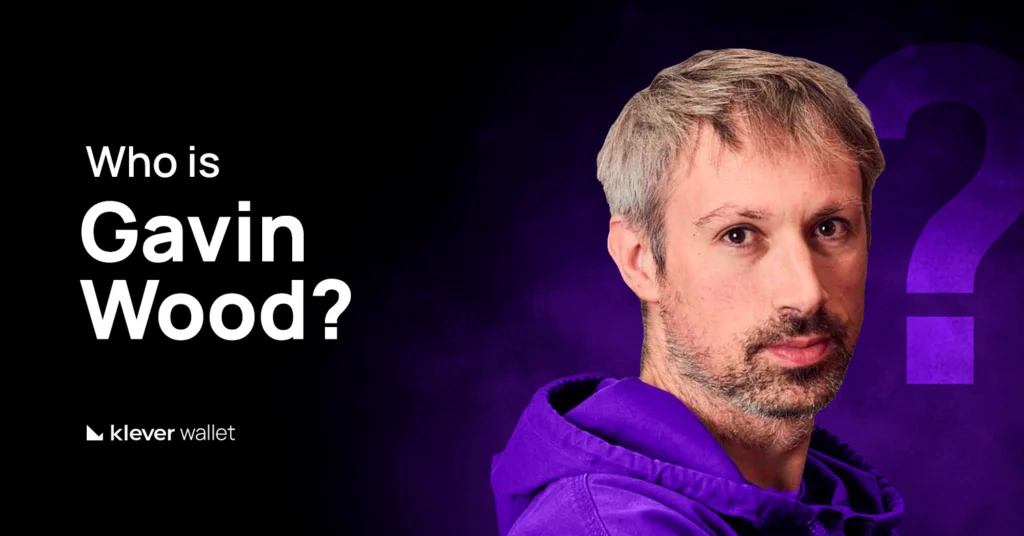
Gavin Wood is the engineer behind some of the most important breakthroughs in blockchain. He co-founded Ethereum, wrote the Yellow Paper that defines how the EVM actually works, and helped create Solidity — the language used by countless developers to build smart contracts.
After shaping Ethereum’s foundation, he went on to design Polkadot, a system built to let independent blockchains communicate and operate together with stronger security and flexibility.
Few people have influenced the technical direction of Web3 as much as Wood. His work didn’t just support the growth of decentralized applications — it changed how entire networks are built, upgraded, and connected.
This is the story of Gavin Wood — the engineer whose ideas and projects continue to shape the future of decentralized technology.
Early Life and Education of Gavin Wood
Gavin James Wood was born in Lancaster, England, in 1980. He studied at Lancaster Royal Grammar School and earned a Master of Engineering degree in Computer Systems & Software Engineering from the University of York in 2002. He later completed a PhD focusing on visualization and software design.
These foundations helped him become one of the most technically advanced builders in the blockchain ecosystem.
Gavin Wood´s Career Before Blockchain
Wood spent the early years of his career working on software engineering, formal languages, and complex system architecture.
This period shaped his approach to designing decentralized networks with strong academic structure and long-term sustainability.
Gavin Wood´s Contribution to Ethereum
Co-Founder and First CTO
When Ethereum was still just a concept on paper, Gavin Wood joined the founding team and became its first Chief Technology Officer. His job wasn’t just organizational — he was responsible for turning early ideas into real, functioning code.
Wood helped design the system’s core architecture and guided the technical direction that would allow Ethereum to grow into a global smart-contract platform.
Author of the Ethereum Yellow Paper
One of Wood’s most defining contributions is the Yellow Paper, the formal technical specification of the Ethereum Virtual Machine (EVM).
Unlike blog posts or whitepapers, the Yellow Paper lays out the exact rules the network must follow — from how transactions are processed to how smart contracts execute. It remains the authoritative reference for developers who need precise, protocol-level understanding of Ethereum’s inner workings.
Creator of Solidity
Wood also played a key role in creating Solidity, the programming language developers use to write smart contracts. By designing a language that was familiar enough to traditional programmers but powerful enough for decentralized applications, he set the stage for thousands of projects, tokens, and protocols to be built on Ethereum.
Today, Solidity is the most widely used smart contract language in the industry — and its foundations trace directly back to Wood’s work.
Vitalik Buterin and Gavin Wood: How Their Partnership Shaped Ethereum
Vitalik Buterin and Gavin Wood worked side by side during Ethereum’s creation. Vitalik introduced the core idea of a programmable blockchain, while Gavin focused on transforming that vision into real, functioning code.
Their strengths complemented each other: Vitalik shaped the protocol’s direction, and Gavin delivered the technical foundation through the Yellow Paper, early client development, and the creation of Solidity.
As the project matured, they pursued different paths — Vitalik remained focused on Ethereum’s long-term evolution, and Gavin built Polkadot with a new architectural approach. Even as they lead separate ecosystems today, their early collaboration remains one of the key reasons Ethereum became a successful global platform.
Gavin Wood’s Others Projects
Web3 Foundation and Parity Technologies
After concluding his work at the Ethereum Foundation, Gavin Wood focused on building the infrastructure needed for the next generation of decentralized systems. He founded Parity Technologies, a company known for developing high-performance blockchain software and advanced tools used by developers around the world. Parity became the engine behind major innovations, including the technology that powers Polkadot.
Wood also established the Web3 Foundation, an organization created to fund research, support protocol development, and accelerate projects that advance a more open, user-controlled internet. The foundation provides grants, education, and long-term technical support for teams building decentralized networks and real Web3 applications.
Together, Parity Technologies and the Web3 Foundation form the backbone of Wood’s mission: giving developers and researchers the tools, resources, and infrastructure needed to build secure, scalable, and future-focused blockchain ecosystems.
Creator of Polkadot
Gavin Wood is best known today as the founder and chief architect of Polkadot, a network designed to connect multiple blockchains in a shared environment.
Polkadot introduces several key innovations:
- Interoperability: different networks can transfer data securely
- Shared security: parachains leverage the same base security layer
- Customizable chains: developers build blockchains using Substrate
- Upgradable architecture: the protocol can evolve without hard forks
Wood’s vision focuses on creating infrastructure where blockchains can work together instead of operating in isolation.
Gavin Wood´s Influence on Web3
Gavin Wood is widely recognized for giving shape and visibility to the concept of Web3. While others discussed decentralization in theory, Wood articulated Web3 as a practical framework: an internet where users—not corporations—control their data, identity, and digital interactions.
His influence goes beyond naming the term. Wood’s research, code, and architectural designs consistently push the industry toward systems that are secure, upgradeable, transparent, and resistant to centralized control. He focuses on long-lasting protocol engineering rather than short-lived speculation, advocating for networks that can evolve reliably over time.
In practice, Web3 as we know it today — interoperable blockchains, on-chain governance, self-custody, and open infrastructure — reflects ideas Wood has promoted for years through his work on Ethereum, Polkadot, and the Web3 Foundation.
Why is Gavin Wood Important?
Gavin Wood’s work left a permanent mark on blockchain technology. His contributions shaped the foundations of Ethereum, introduced the tools that power countless decentralized applications, and set new standards for how blockchains can connect and evolve.
From the creation of Solidity to the design of Polkadot’s multi-chain architecture, Wood consistently pushed the industry toward more secure, flexible, and user-focused systems.
Today, many of the assumptions developers and researchers rely on — how smart contracts should behave, how networks can scale, how blockchains communicate — exist because Wood helped define them. His work continues to guide how new networks are designed and how existing ones adapt to the future.
Gavin Wood is not just part of blockchain history; he’s one of the architects shaping where it goes next.




